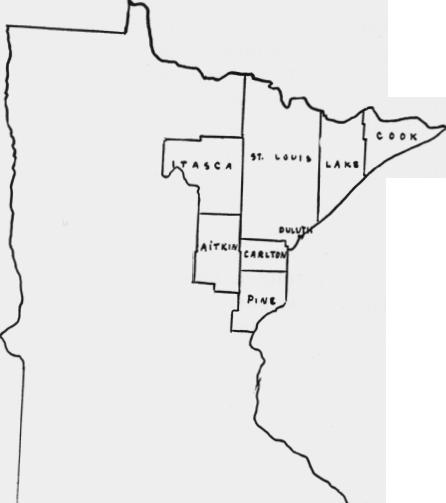level, and into its waters pours the iron-rich flow of the St. Louis River. The steep ridge formed by the ice ages rises sharply from the shore line, almost as if to discourage any sane person from setting himself down to live there, but often man taunts the laws of nature and wants to materialize the impossible. In 1852 there arrived on "the wrong side of the river" a white man named George R. Stuntz, who in the following year settled down as a permanent resident on the site. He was followed by others. In 1856 the Reverend Joseph G. Wilson was offered some land gratis in this city of the future in return for giving the place an appropriate name. Searching for old books which might help he found at last a work which described the trips of the first explorers into Minnesota. That book mentioned the name of Daniel Greysolon, Sieur du Lluth, and it was after him that the area was named Duluth. In 1857 Duluth was recognized as a post office
address, but an economic depression that same year wiped the village off the map. A few years later, however, there were a few
settlers there again, and they felt themselves so strong dur
ing the threat of Indian unrest in 1862 that they declared they would take care of themselves if need be, while the inhabitants of Superior, on the other side of the river, requested military aid from the state. 2
In 1860 there was a population of 80 persons in Duluth, and a decade later the figure had climbed to 3,131. It had then, to all intents and purposes, become a city, although nobody was able to predict then that this was but the beginning of the period of growth. Least of all was it imagined by Congressman J. P. Knott of Kentucky, who ironically addressed Congress in
2. op. cit. p. 161

207